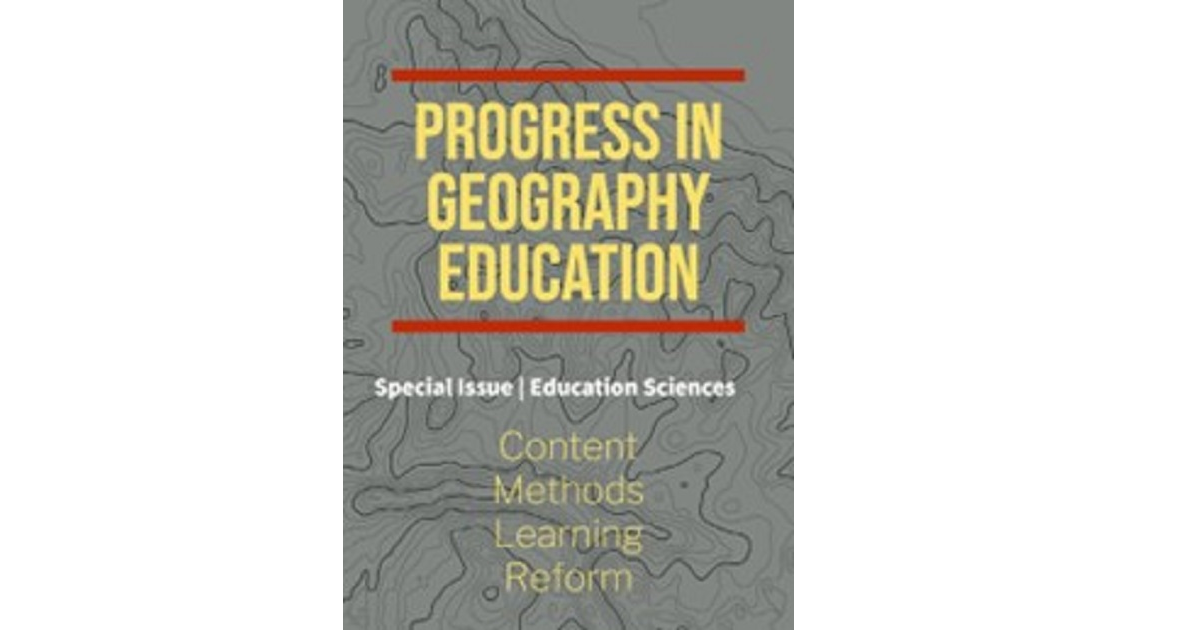Progress in Geography Education Research
A special issue of Education Sciences (ISSN 2227-7102).
Deadline for manuscript submissions: closed (15 January 2024) | Viewed by 29924

Special Issue Editor
Special Issue Information
Dear Colleagues,
Geography, the science of places and human–environment relations, permeates all disciplines in addition to being a separate area of study. While geography’s subject matter covers a range of content, it imparts concepts, skills, and perspectives that distinguish it from other elements of K-12 and higher education.
The aim of this Special Issue, Progress in Geography Education Research, is to synthesize existing understandings of geography education, identify frontiers of geography education research, and showcase the utility of geography education research to geographers and education scholars, more broadly.
Suggested themes include:
- Content: Geography’s relevance to other domains of education research, including the natural sciences, civics, history, economics, and mathematics.
- Methods: Research methods in geography education (e.g., quantitative/qualitative/mixed methods, issues of replicability and reproducibility).
- Learning: How learners of different sociocultural backgrounds master geographic concepts and skills.
- Reform: Connections between geography education and education reform in K-12 and higher education.
Dr. Thomas Barclay Larsen
Guest Editor
Manuscript Submission Information
Manuscripts should be submitted online at www.mdpi.com by registering and logging in to this website. Once you are registered, click here to go to the submission form. Manuscripts can be submitted until the deadline. All submissions that pass pre-check are peer-reviewed. Accepted papers will be published continuously in the journal (as soon as accepted) and will be listed together on the special issue website. Research articles, review articles as well as short communications are invited. For planned papers, a title and short abstract (about 250 words) can be sent to the Editorial Office for assessment.
Submitted manuscripts should not have been published previously, nor be under consideration for publication elsewhere (except conference proceedings papers). All manuscripts are thoroughly refereed through a double-blind peer-review process. A guide for authors and other relevant information for submission of manuscripts is available on the Instructions for Authors page. Education Sciences is an international peer-reviewed open access monthly journal published by MDPI.
Please visit the Instructions for Authors page before submitting a manuscript. The Article Processing Charge (APC) for publication in this open access journal is 1800 CHF (Swiss Francs). Submitted papers should be well formatted and use good English. Authors may use MDPI's English editing service prior to publication or during author revisions.
Keywords
- geography education
- methods in education research
- curriculum
- learning science
- place-based education
- science education
- social studies education
- educational philosophy
- teacher education
- education reform
- K-12
- higher education
Benefits of Publishing in a Special Issue
- Ease of navigation: Grouping papers by topic helps scholars navigate broad scope journals more efficiently.
- Greater discoverability: Special Issues support the reach and impact of scientific research. Articles in Special Issues are more discoverable and cited more frequently.
- Expansion of research network: Special Issues facilitate connections among authors, fostering scientific collaborations.
- External promotion: Articles in Special Issues are often promoted through the journal's social media, increasing their visibility.
- Reprint: MDPI Books provides the opportunity to republish successful Special Issues in book format, both online and in print.
Further information on MDPI's Special Issue policies can be found here.





